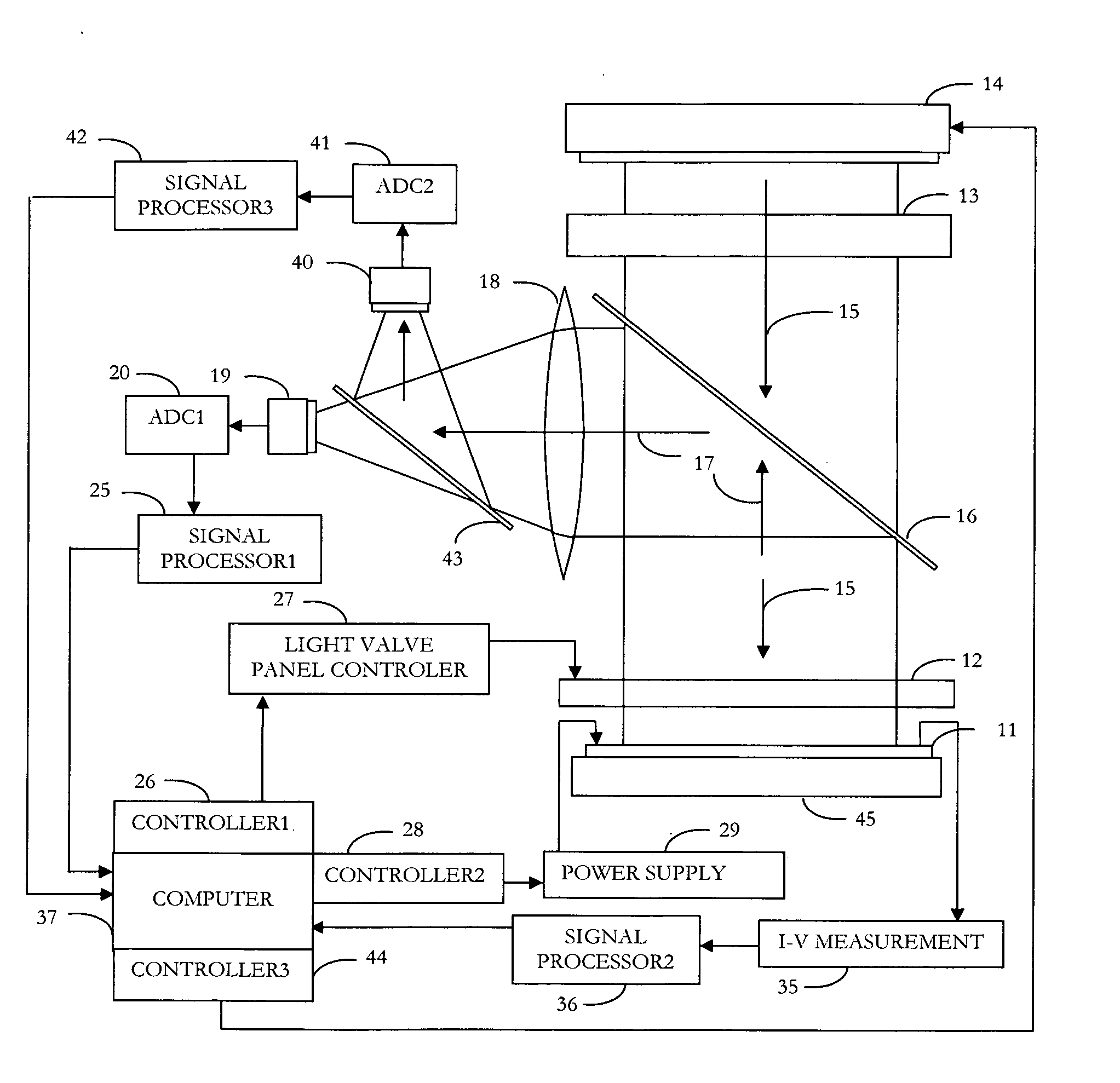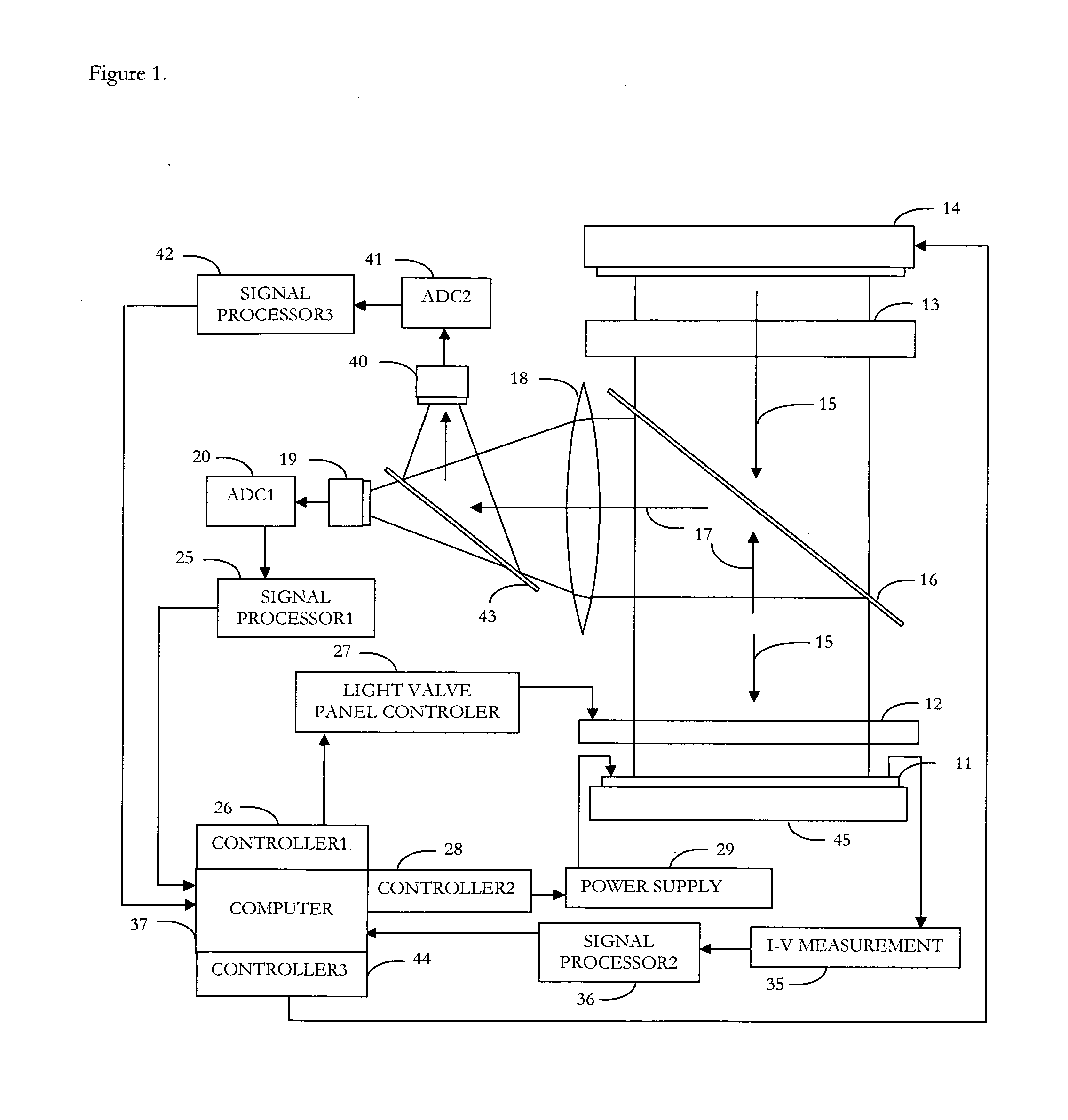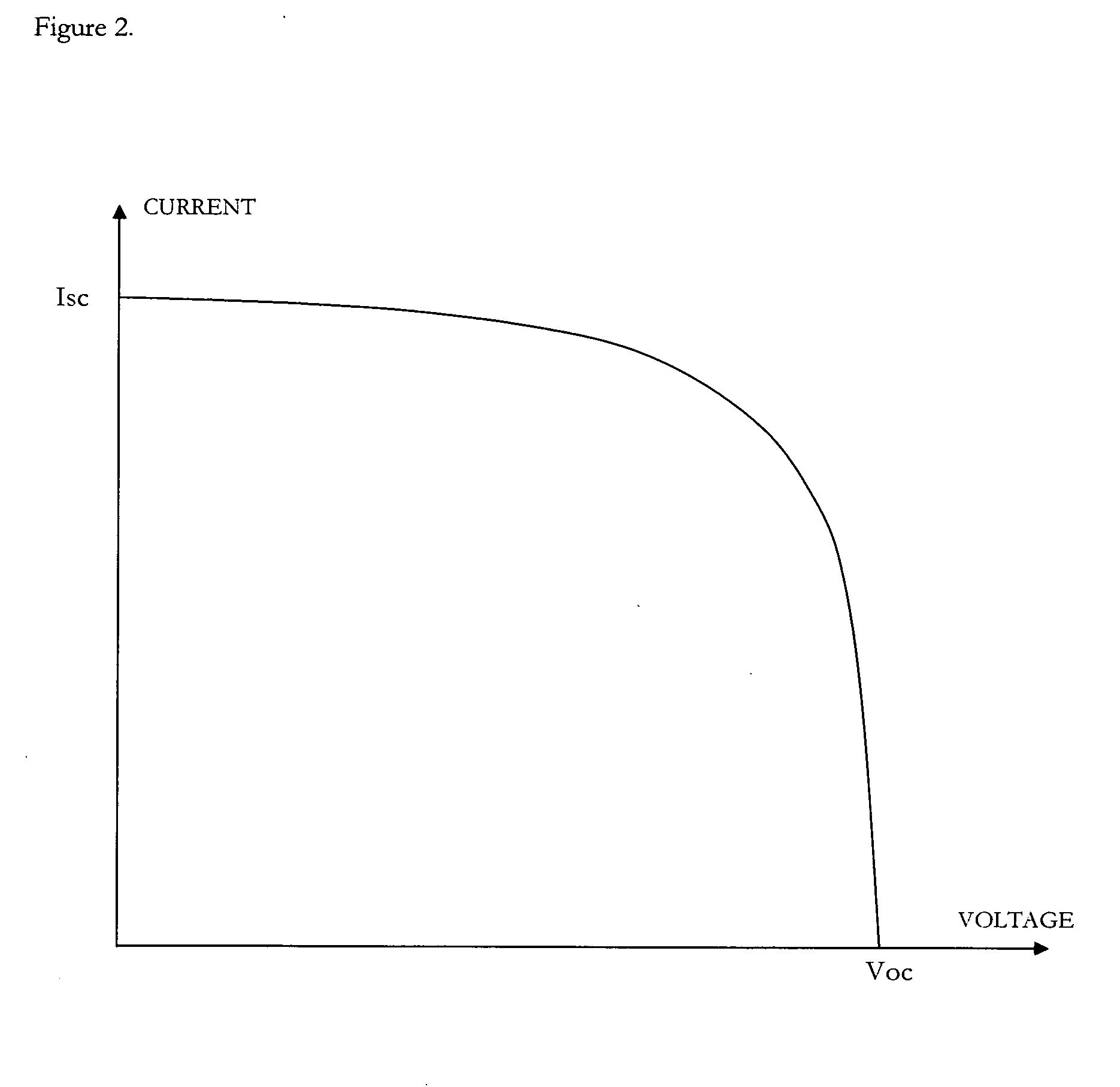System and method for detecting defects in a solar cell and repairing and characterizing a solar cell
a solar cell and defect detection technology, applied in the field of electronic circuit testing and repair, can solve the problems of low yield of solar cell manufacturing, low price of solar cell modules, and diminishing the number of working units, so as to improve the accuracy and efficiency of testing.
- Summary
- Abstract
- Description
- Claims
- Application Information
AI Technical Summary
Benefits of technology
Problems solved by technology
Method used
Image
Examples
Embodiment Construction
[0030]FIG. 1 is a block diagram of the test apparatus illustrating a structure to test and repair solar cells. A solar cell is tested after manufacturing process is completed to give functionality of current generation when the surface of solar cell receives light. In the FIG. 1 the solar cell under test (SUT) 11 may be tested in two modes, independently or in serial modes. The SUT can receive the optical input beam 15, which is generated by the optical energy source 14 and goes through the light valve panel (LVP) 12. The optical input beam 15, if necessary for collimation of light, may be expanded and collimated by the beam expander 13. If the SUT has no defect and works properly, then it generates photo-induced current and the I-V (current-voltage) measurement unit 35 measures the current-voltage characteristic as shown in FIG. 2, where Isc and Voc stand for a short circuit current and an open circuit voltage, respectively. FIG. 6 shows the equivalent circuit of a solar cell, wher...
PUM
| Property | Measurement | Unit |
|---|---|---|
| photocurrent | aaaaa | aaaaa |
| transmittance | aaaaa | aaaaa |
| size | aaaaa | aaaaa |
Abstract
Description
Claims
Application Information
 Login to View More
Login to View More - R&D
- Intellectual Property
- Life Sciences
- Materials
- Tech Scout
- Unparalleled Data Quality
- Higher Quality Content
- 60% Fewer Hallucinations
Browse by: Latest US Patents, China's latest patents, Technical Efficacy Thesaurus, Application Domain, Technology Topic, Popular Technical Reports.
© 2025 PatSnap. All rights reserved.Legal|Privacy policy|Modern Slavery Act Transparency Statement|Sitemap|About US| Contact US: help@patsnap.com



